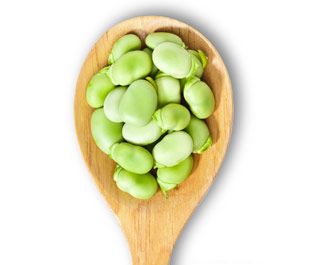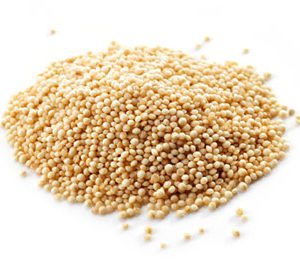Lima beans are a type of legume, similar to split peas and lentils. They’ve been cultivated in Peru for more than 7,000 years, but are believed to be native to Guatemala. Known for their buttery texture and flavor, lima beans are sometimes called “butter beans.”
Lima beans come in bush and pole varieties. They grow best in moderately rich, well-draining soil, with a pH level between 6.0 and 6.8. They need full sun exposure and a minimum soil temperature of 65 degrees Fahrenheit to germinate. Lima bean plants yield white or yellow flowers, and their pods can be harvested once they feel full.
Lima beans are among the foods that contain the highest amount of lectins, which are sugar-binding plant proteins that attach to your cell membranes. Lectins can resist digestion, acting as anti-nutrients that can disrupt your gut health. They’ve also been linked to autoimmune diseases and inflammation.
Lectin-related health issues arise from overconsuming foods that contain this compound, so make sure you limit your intake of lima beans if you choose to eat them. However, before you do, prepare and cook them properly to reduce their lectin content.
Soak the beans in water for at least 12 hours prior to cooking. You can also add baking soda to the water to neutralize the lectins further. Be sure to rinse the beans thoroughly afterward and cook them on high heat for at least 15 minutes. Using a pressure cooker to cook lima beans also helps reduce their lectin content.
Health Benefits of Lima Beans
Lima beans provide folate, which may help support DNA synthesis and cell division. They also contain thiamin, a vitamin involved in energy metabolism, and vitamin B6, which plays a role in more than 100 enzyme reactions.
They contain pantothenic acid, riboflavin and niacin, which function as coenzymes to help metabolize carbohydrates, protein and fats in your system. Plus, they provide high amounts of dietary fiber, which may help improve bowel movement, maintain gastrointestinal health, reduce cholesterol levels and control blood sugar levels.
Lima beans contain various important minerals, including manganese, iron, magnesium, potassium and phosphorus. Find out more about the nutritional value of lima beans in the nutrition facts table below:
| Lima Beans Nutrition Facts
Serving Size: 3.5 ounces (100 grams), cooked, without salt |
||
| Amt. Per Serving |
% Daily Value* |
|
| Calories | 115 | |
| Total Fat | 0.38 g | |
| Saturated Fat | 0.089 g | |
| Trans Fat | ||
| Cholesterol | 0 mg | |
| Sodium | 2 mg | |
| Total Carbohydrates | 20.88 g | |
| Dietary Fiber | 7 g | |
| Sugar | 2.9 g | |
| Protein | 7.8 g | |
| Folate83 mcg | Vitamin C | 0.516 mg |
| Calcium17 mg | Iron | 2.39 mg |
Studies Done on Lima Beans
A study published in the British Journal of Nutrition evaluated 10 local legumes, one of which was lima beans. Results showed that lima beans contained the highest amount of iron among all the other legumes tested, which included chickpeas, mung beans and green peas. Researchers concluded that lima beans and other legumes “are considered low-GI foods and have shown potential hypocholesterolaemic effects.”
Since lima beans contain lectins that could prevent you from getting their nutritional benefits, it’s important that you follow the preparation and cooking methods I mentioned above. One study shows that soaking and cooking lima beans under high heat or high pressure may help reduce their lectin, phytic, tannin and cyanide content.
Lima Beans Fun Facts
Spanish conquistadors introduced lima beans to Europe and Asia after discovering them from the Incas in Peru during the early 1500s. It wasn’t until the 19th century that lima beans were introduced to U.S., where they are now primarily cultivated in California for commercial production. Although the lima beans we see today are either green or white, early Peruvian beans came in various colors, including brown, purple and red.
Summary
Lima beans have a buttery texture that complements a wide array of dishes, especially casseroles and soups. They contain various vitamins and minerals, including folate, iron, manganese, thiamin and vitamin B6.
However, the major caveat to consuming lima beans is their high lectin content, which has been linked to inflammation and autoimmune diseases. If you choose to eat lima beans, be sure to prepare and cook them properly to reduce their antinutrients. Remember to limit your consumption as well, since they are high in carbohydrates.







Reviews
There are no reviews yet.